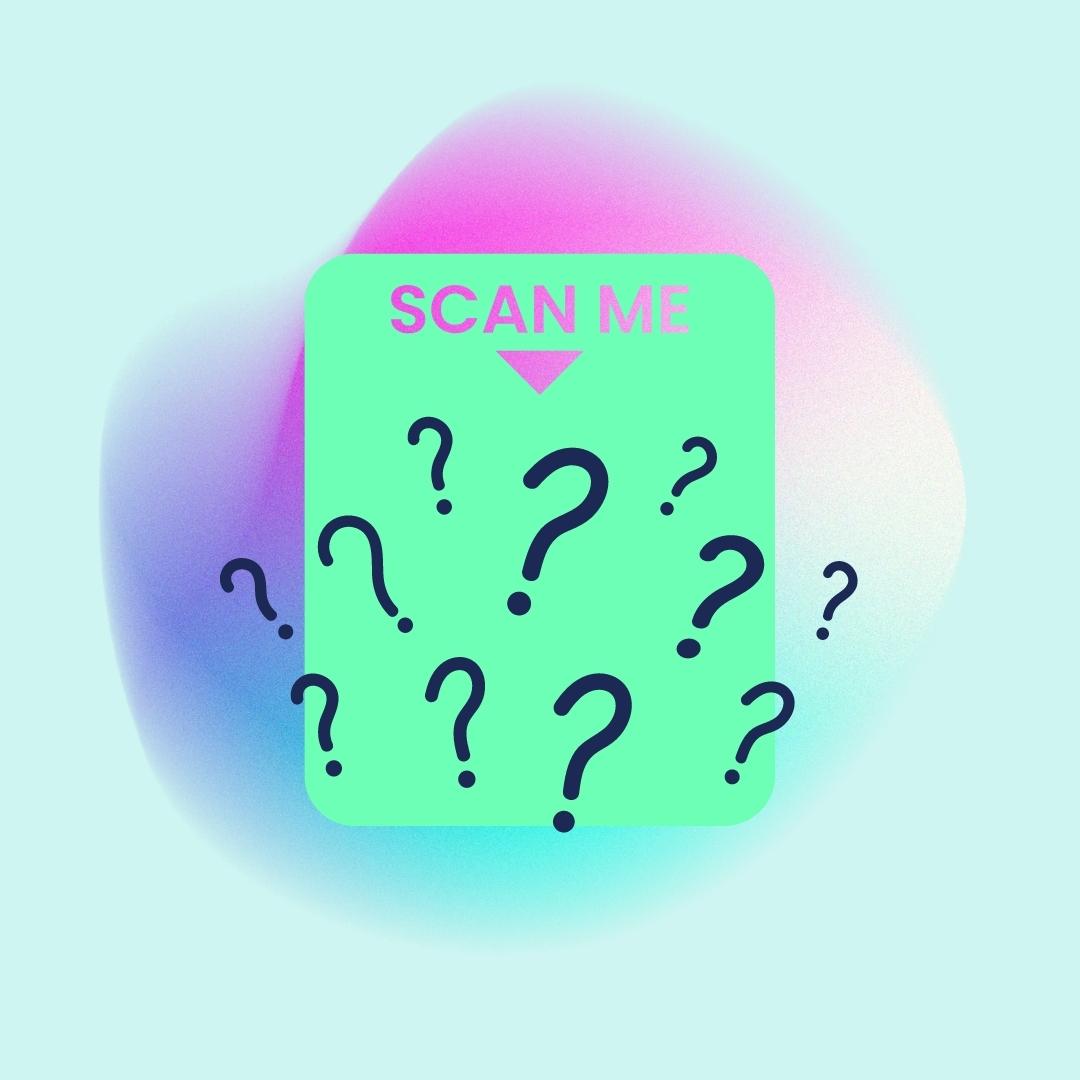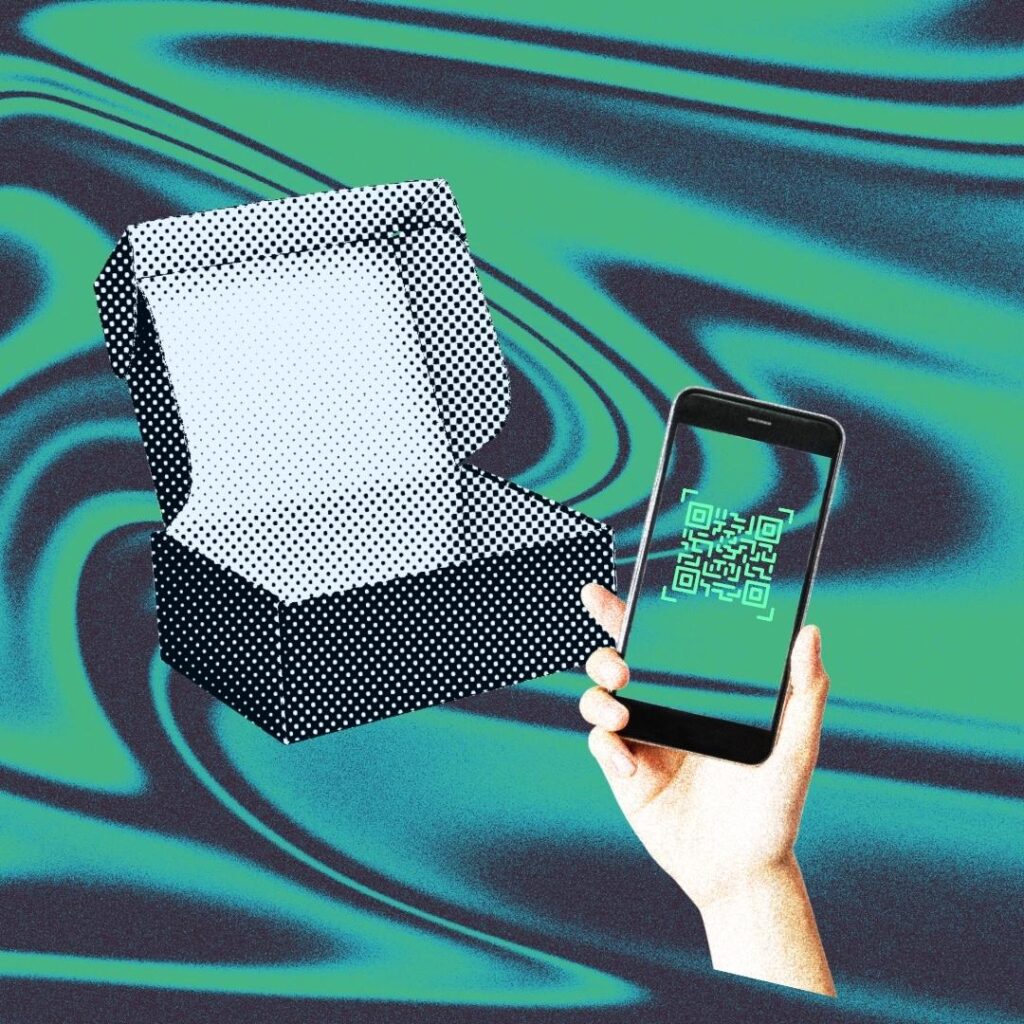QR codes are awesome! They’re convenient, flexible, and a speedy way to connect physical places and things to digital content.
But, I think we can agree that generally the user experience for QR codes kinda… sucks. I’m confident this has happened to you before. You scanned a QR code and got a crummy experience. You might have got:
- an unreadable wall of text
- a uselessly generic homepage
- a page that doesn’t work on mobile
- a ‘dead-as-doornails’ link.
At Qub we call these ‘fiascodes’. (Sorry / not sorry). A fiascode is when a QR code is created with the best intentions, but poor user experience turns it into a huge fail.
For brand experience this is poison. It leaves your customer disappointed, right when they’re at their most engaged. The user is left thinking ‘if this brand can’t get something as simple as a QR code right, how are they going to get ANYTHING right?’
We find this frustrating, because each bad QR code experience is a huge wasted opportunity. QR codes have immense potential for creators and brands to create meaningful experiences that keep people engaged with their story. But it’s easy for QR code content to go wrong.
So, this is a manifesto of sorts against ‘fiascodes’ and a call to arms to make QR code experiences better for everyone.
The context of a QR code
Let’s consider the context in which a QR code is experienced.
First, the user is on a mobile device. They might be in a store, on the street or in their home with a product in front of them.
They have their phone in their hand.
They are engaged by what they’re looking at. They want to know more. So they scan the code.
This is the number one strength of QR codes that marketers recognise: the ability to link mobile devices to digital content without typing or navigating a tiny screen.
It’s also the source of most bad QR experiences: either the content is not optimised for mobile contexts, the content isn’t relevant to the context, or both.
Here are the biggest sins of QR codes:
Not mobile friendly
QR codes are a mobile-first technology. If a user is scanning your QR code, they are on their phone, and likely to be ‘on the go’ with lots of things to distract and disrupt them.
Many QR codes link to visually complex, wordy pages that are not formatted for mobile screens.
The biggest fails here are:
- Web pages that aren’t designed for mobile users and don’t flow well on mobile screens
- Pages that don’t respond to touch controls, or that have tiny interface elements that are hard to tap on a touchscreen.
- Landscape aspect videos that force the user to rotate their phone. Today’s smart phones are massive – turning a phone in one hand is close to impossible.
- Walls of text and graphics – trust me, no one is going to scan a QR code and read a 2000 word blog post on their phone. No one.
- Unfocused content that is a mess of different ideas and actions – again, the user is on their phone, they want you to get to the point!
- Slow loading times
- Time-wasting content. Users want the info and the action quickly. Mobile users doubly so.
- Clunky and off-brand video experiences, like YouTube videos plastered with ads, or self-hosted videos that never load.
The obvious solution here is to build experiences that respond to the mobile-first context of the user.

Not managing user expectation
Because a QR code is merely a container for data, the content linked from the code can be anything. A user cannot know what they’re going to get from QR code before they scan it.
This gap between expectation and result makes scanning a QR code a ‘roll of the dice’.
A great QR code experience should start with a clear call to action beside the code, telling the user what they’re going to get when they scan, but so often they are carelessly slapped in the corner of a design, hoping someone will engage with them.
No consistency from one code to the next
A downside that emerges from the flexibility of QR codes is there’s no consistency from one QR code experience to the next. Each one is a new unknown – interactive forms, web pages, videos, app downloads.
This is confusing and terrible for user experience! Users want to know what they’re getting, and they want experiences that are consistent with others they’ve had before.
Not relevant to the user
Each QR code connects a physical object or place with a digital experience: you know where your customer is and what they’re looking at. This a great strength of QR codes: you can tailor content to that specific scenario – be it a place, product or event.
Likewise, you know your user is engaged by the code, because they took the time to scan it. You know you have a qualified, engaged prospect.
The worst offender in this category is a lazy QR code that links to a brand’s homepage.
Homepages are generic and unfocused: they don’t add value to a user’s experience and understanding. QR codes like these are a wasted opportunity.
Considering what the user is doing right now, what more they should know, and what they might want to do next is key to a great QR user experience, but few creators have the time or tools to customise their content in this way.
Too many ‘one-trick-pony’ codes
You’ll occasionally see a ‘wall of codes’ on a package or sign, with multiple codes all shoved together with labels for all the different things they link to. While I appreciate the enthusiasm for QR codes, this is an awful user experience.
It’s ugly & clunky.
A more user-friendly approach is a single QR code with multiple possible jumping off points to the rest of a creator’s digital ecosystem.

Not Maintained
Once printed, the data contained within a QR code can’t be changed. Because of this, it’s common to scan a ‘dead’ QR code that takes you to outdated content, a 404 error, or a deleted YouTube video.
Dead codes are common because the web is constantly changing. Content can be deleted by the author, taken down for copyright violations, or updated so it is no longer relevant to the QR code linking to it. Without a system for managing QR codes and their content, things fall through the cracks and codes end up dead links.
The Qub manifesto
QR codes are powerful tools and they deserve better. They have the ability to create deeper and more meaningful experiences, inform, educate and entertain.
Most recognise their potential to seamlessly link the real world with the digital. Few use them correctly.
At Qub, our vision is to help everyone create great QR code experiences. We’re building tools to create the best possible QR code experiences, for code creators and code scanners.
At the core of Qub is the video QR code: QR codes linked to short form video, with interactive elements that connect everything. This new format of QR code is easy to create and awesome to experience.
It’s the first step towards a world with no more ‘fiascodes’.



